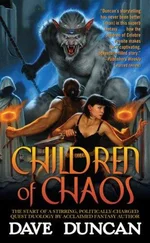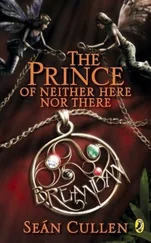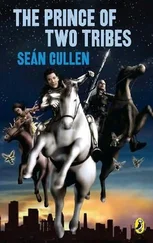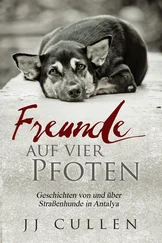____
It was time for target practice. They picked a beautiful spot. The place was called Rampart Range: a winding network of unpaved roads through rugged national forest in the Rockies, not too far from Dylan’s house. For their first extended gunplay, they picked an area set aside for dirt bikers and joyriding on ATVs. An off-roading Web site urged readers to experience the vistas slowly: “let your imagination run wild as the boulders take on ever-changing faces.”
Three friends went with them on March 6: Mark Manes and Phil Duran, who had teamed up to get Dylan the TEC-9, and Mark’s girlfriend, Jessica. They brought the guns acquired for the attack, and their friends had a couple more. They packed bowling pins stolen from Belleview Lanes to use as targets. And they took a camcorder. It was important to document historic events.
It was cold up there, still plenty of snow on the ground. They dressed sensibly, in layers. Eric and Dylan started with their trench coats on, but worked up a sweat and shed them. They had ear protection and eye gear. Some of the time they wore it.
They shot a bowling pin full of lead, and then Eric had another idea. He aimed his shotgun at an imposing pine five feet away. He missed. And it hurt. The gun had a vicious recoil, which his arm had to absorb. Every inch you cut a shotgun back magnifies the kick. Eric and Dylan had cut theirs back ridiculously short, almost to the chamber, and now they were going to pay.
He directed Dylan to follow. “Try to hit a tree,” he said. “I want to see what a slug does to the tree.”
Dylan punched a two-inch wide hole in the trunk. They rushed forward to inspect the damage. Eric dug his finger around and produced a pellet.
“That’s a fucking slug!” Dylan squealed.
Eric’s voice was subdued. “Imagine that in someone’s fucking brain.”
“It hurt my wrist, the son of a bitch!” Dylan said.
“I bet so.”
Dylan was laughing now. “Look at that! I’ve got blood now!” He loved it.
Eric kept working the human metaphor. He picked up a bowling pin with a small hole drilled through the front and a crater out the back. He showed off each side to the camera: “Entry wound, exit wound.” His buddy laughed, but he didn’t understand. He got the little joke, missed the big one. The battle was already under way around him. Eric loved foreshadowing. Everyone there was implicated. Only two could see.
Most of the time they worked methodically to improve their skills. One kid would fire while another stood beside him, calling out results to make real-time adjustments: “High to the right… low to the left… left again…”
Single-barrel shotguns require a reload every round, and that would seriously impact the body count. Eric prepared by drilling himself in a rapid shoot-and-load technique. Every shot was punishing. The blast would tear the barrel out of his left hand and whip his gun arm back like a rubber band. But he learned quickly. Soon he was riding out the recoil to catch the barrel-stub as it swung around, snap it open, feed a shell, lock it down, squeeze a round, and repeat the process in one fluid, continuous motion. He pounded out four shots in five seconds. He was pleased.
It had all been theoretical up to that point: How much damage could they really do with that gun? They had their answer now. Eric was a killing machine.
Eric and Dylan approached the camera to show off their war wounds: large patches of skin scraped off between thumb and forefinger, where they needed to work on tightening their grip.
“When high school kids use guns,” somebody said. Everybody laughed.
Manes tried Eric’s gun, and winced at that handgrip. “You should round that out,” he advised.
“Yeah,” Eric said. “I’m gonna work on that.”
They fired more and showed the wounds again: bloodier, more severe. “Guns are bad,” Manes said. “When you saw them off and make them illegal, bad things happen to you.” That got lots more laughs. “Just say no to sawed-off shotguns.”
They were on a roll now. Eric grabbed hold of his gun barrel and mugged for the camera. He spanked the firing assembly several times. “Bad!”
Dylan waved his index finger at it. “No! No! No!”
Dr. Fuselier watched the Rampart video a few days after the massacre. It showed the final progression from fantasy to fact. It had been a two-year evolution from frivolous prankster missions to a series of esclating thefts. Eric was turning into a professional criminal. He had crossed the mental hurdle from imagining crimes to committing them. This was how it would feel.
____
The boys continued training. They made three target-practice trips with Manes.
Dylan leaked again. He had been excited about his weapons, and sometime in February, he told Zack he had gotten something “really cool.”
Like what?
Something in Desperado, Dylan said—a violent film they thought Quentin Tarantino directed.
Zack confronted him: It was a gun, wasn’t it?
Yeah, a double-barreled shotgun, Dylan said, just like the piece in Desperado . Eric had gotten one, too. And they had fired them. Freaking wild!
They never spoke about it again, Zack told the FBI later.
49. Ready to Be Done

Mr. D knew the date his mission would wrap: May 18, 2002. He had one objective after the massacre: to shepherd nearly two thousand kids to emotional high ground. The last class of freshmen would graduate that May.
Frank had no idea what he might do afterward. He could not plan yet—his hands were full. He had three school years to get through. He had seriously underestimated the turmoil of the first. Nobody had foreseen that torrent of aftershocks. He would not make that mistake again. The second summer offered a respite, just like the first, but when the doors reopened in August 2000, the faculty braced for the next onslaught. It never came. There was never a year like that first one—never anything close.
The second school year got off on a high note. An addition had been constructed over the summer, with a new library. The old one was demolished, converting the commons into a two-story atrium. Most of the Parents Group attended the opening. Sue Petrone glowed. For the past sixteen months, she had felt physically weak every time she’d stepped inside the school. “Like you’re underwater and can’t breathe,” she’d said. All that was lifted away. She had been fighting for more than a year, and she was done. Nearly all the parents were.
Sue’s ex-husband was the exception. Brian Rohrbough and Frank DeAngelis dominated the ceremony, standing thirty feet apart in the cafeteria with a cluster of reporters around each, talking about each other. Mr. D was diplomatic and tried to avoid the feud altogether. But reporters kept shuttling over from Rohrbough, with fresh accusations for Mr. D to respond to. Brian was brutal and direct. The school caused these murders, he said. The administration must pay.
____
Mr. D developed a heart condition. It appeared the first autumn after the shootings. Stress, the doctors said. No kidding.
Frank was riddled with symptoms of PTSD: numbness, anxiety attacks, inability to concentrate, and reclusiveness. Therapy helped him sort them out. Immediately after the murders, he had trouble making eye contact. It got worse. What was that about? “Guilt,” he discovered. “I had never heard of survivor guilt. I felt guilty that Dave and the kids died and I lived.”
His wife wanted to help. It was eating him up, but he couldn’t express it to her. He was just like his students. “Don’t shut your parents out,” he begged them. He could cry in front of them. But his wife… she didn’t understand. And he didn’t particularly want her to. He just wanted solace at home.
Читать дальше








